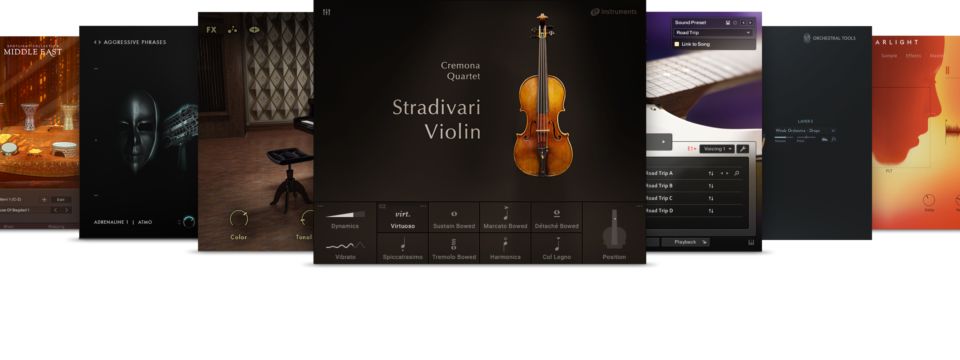

- #Kontakt 5 vs kontakt 6 player update#
- #Kontakt 5 vs kontakt 6 player Patch#
- #Kontakt 5 vs kontakt 6 player full#
- #Kontakt 5 vs kontakt 6 player software#
- #Kontakt 5 vs kontakt 6 player plus#
But, while it can let you use some functionalities of Kontakt 5, it is actually pretty limited. Pretty limited featuresĪs mentioned, Kontakt 5 Player derives from Kontakt 5. It also offers various customization options, including sound quality. Kontakt 5 Player is easy to download, install, and setup. More, you can even expand it with a wide range of affordable downloadable packs to accommodate various musical styles and genres.
#Kontakt 5 vs kontakt 6 player software#
Aside from it being free, the app can be used as standalone software or as a plugin on any popular music sequencer. More, you can also edit parameters in your composition. The app will let you compose music using various libraries.
#Kontakt 5 vs kontakt 6 player full#
However, if you are not heavy into composing for an orchestra full time, then you can make do just fine with it. The main differences being that Kontakt 5 Player is the free and stripped-down version, meaning some features are not available. In most commercial libraries, there’s a delay or convolution reverb loaded as an insert or send effect by default, so make sure to delete it (bypassing is not enough!) if you don’t use it! You can access the FX-slots by clicking on the wrench-symbol in the top left corner of your Kontakt-instrument.To start, Kontakt 5 Player is essentially the same application as the Kontakt 5 program. Personally, I prefer to use my third party reverbs in my DAW instead, so the only thing that Kontakt’s own convolution effects do is taking up my precious RAM… However, it might absolutely be worth it to deactivate convolution reverbs and delays within Kontakt if you are not planning to use them (a 3 second convolution reverb impulse response takes up about 20-30 mb of memory). For most effects, this ends up being only a fraction of a megabyte per effect and is probably not even worth to think about. With my setup, this process works in realtime as I play in my parts, without any glitches, artifacts or additional latency, and works no matter if samples are stored on SSD or normal hard drives.Īs described earlier, every insert-, group-, bus- or send effect within a Kontakt instrument uses a little bit of memory. In other words, no samples are loaded into RAM when I open my template.īy doing so, Kontakt will only load samples into RAM that I will actually use in my track.
#Kontakt 5 vs kontakt 6 player update#
I removed all the samples of all the instruments in my template from RAM by choosing “ reset markers” and “ update sample pool” in the Load/Save – Global Options menu.


This time, I would recommend to use it on a “per instance” level, as I found that the sampler is capable of loading samples “on the fly” as they are being used in your arrangement. Kontakt is able to detect which notes are not used in your composition and you can remove all the unused samples from RAM.Īgain, this function is available per instance and per instrument.
#Kontakt 5 vs kontakt 6 player Patch#
Kontakt 5 is capable to purge samples which are not currently used in your track to free up your RAM.įor example, you might only use the notes from C3 to G4 in a piano patch throughout your entire piece. Since Native Instruments Kontakt 5 sampler has manifested itself to an industry standard, here are some tips to optimize its RAM usage quite dramatically:
#Kontakt 5 vs kontakt 6 player plus#
With several modern orchestral sample libraries (strings, brass, woodwinds, percussion, choirs), virtual pop/rock/world instruments (guitars, ethnic drums, etc.) plus some sound design libraries loaded into your sampler, even 64Gb of installed RAM or more are sometimes not enough to run such a big template. It’s not unusual for audio professionals to have 1000+ tracks preconfigured inside their DAWs, which requires a very powerful machine. Therefore, media composers often run big templates on their systems to be able to work fast and to keep the creative flow alive, without being interrupted by such tedious tasks. Locating samples on the hard drive, loading them into a sampler, routing MIDI tracks and outputs inside the Digital Audio Workstation (DAW) and setting up reverbs and effect chains can be quite time consuming processes. When creating a new track in the digital environment, it usually takes some steps to properly set up a virtual instrument.


 0 kommentar(er)
0 kommentar(er)
